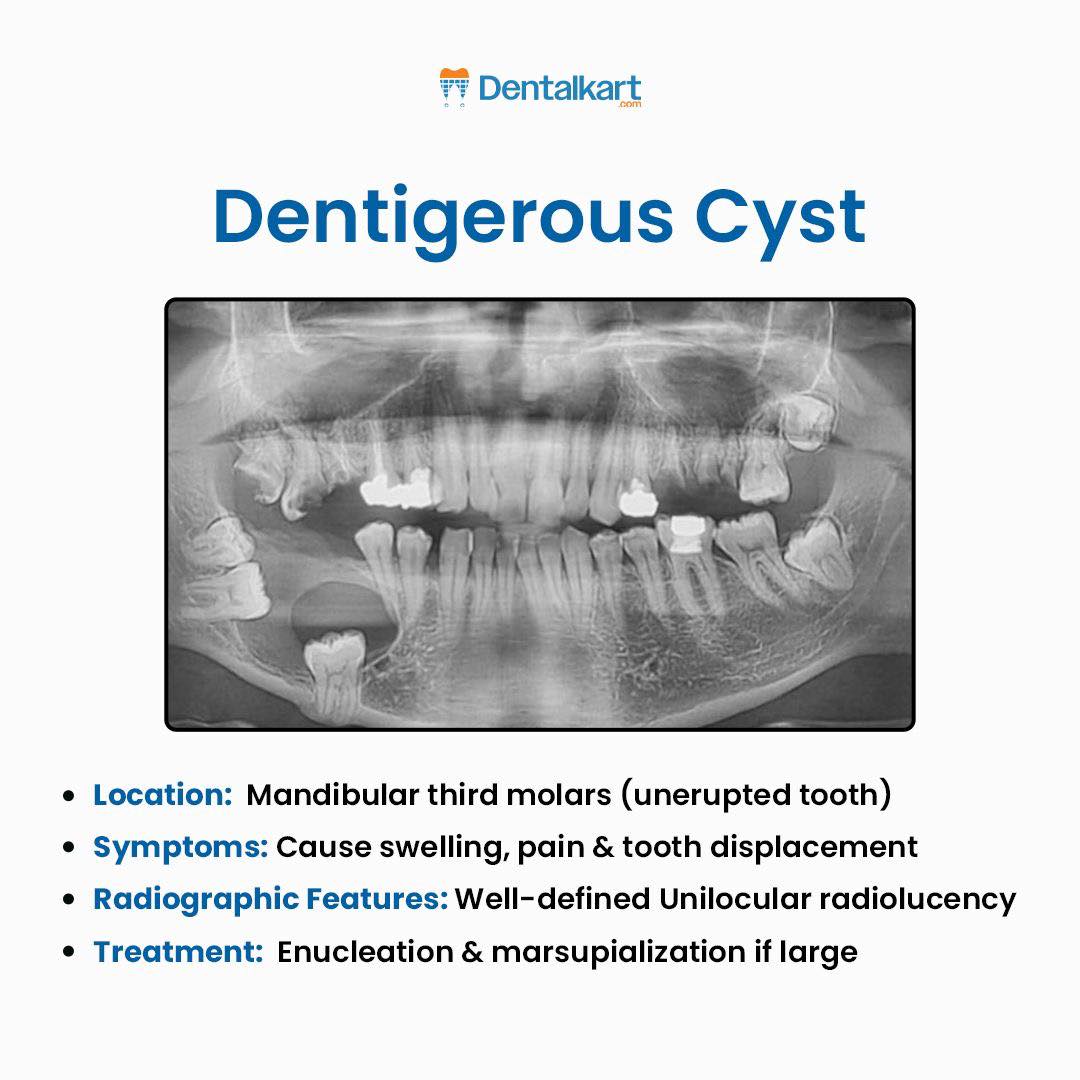We Bring Back the Sparkle in Your Smile.
Comprehensive Case Study: Diagnosis and Management of a Dentigerous Cyst in the Mandibular Third Molar
Language :

Topics:
Dentigerous Cyst
Full Dental Analysis and Diagnosis
Location
Typically found around the mandibular third molars or maxillary canines.
In this X-ray, the lesion appears surrounding the lower left third molar, expanding within the mandibular bone.
Radiographic Appearance
A well-defined unilocular radiolucency with a smooth, corticated border.
The cyst is attached to the cementoenamel junction (CEJ) of the unerupted tooth.
Some surrounding bone resorption is visible due to cystic expansion.
Symptoms and Clinical Signs
-
Swelling in the jaw region
-
Pain or pressure sensation as the cyst enlarges
-
Tooth displacement or root resorption of adjacent teeth
-
Sometimes asymptomatic and discovered incidentally on X-ray
Diagnosis
Provisional Diagnosis: Dentigerous Cyst associated with impacted third molar
Differential Diagnoses:
-
Odontogenic keratocyst (OKC)
-
Unicystic ameloblastoma
-
Radicular cyst (if adjacent to a non-vital tooth)
Confirmatory Test:
Histopathological examination after surgical removal confirms diagnosis.
Treatment Plan
1. Radiographic Evaluation
Perform panoramic and periapical radiographs to define cyst boundaries.
2. Surgical Intervention
-
Enucleation: Complete removal of the cystic lining and involved tooth (for moderate size cysts).
-
Marsupialization: For large cysts, to decompress gradually before full removal.
3. Follow-Up
Regular radiographs at 3, 6, and 12 months to ensure bone regeneration.
Maintain oral hygiene and prevent postoperative infection.
Healing Time Frame
-
Initial healing: 2–3 weeks (soft tissue)
-
Bone remodeling: 3–6 months
-
Full recovery: Up to 12 months depending on cyst size and bone loss
Issues That May Scale Up if Untreated
-
Expansion leading to jaw fracture
-
Secondary infection of the cyst cavity
-
Tooth root resorption of adjacent teeth
-
Possible transformation to ameloblastoma or other neoplastic lesions (rare)
-
Facial asymmetry or malocclusion
Comments
This case shows a classic dentigerous cyst presentation. It is essential to have it addressed promptly to prevent bone weakening and secondary infection. Early surgical management leads to excellent prognosis and bone regeneration.




